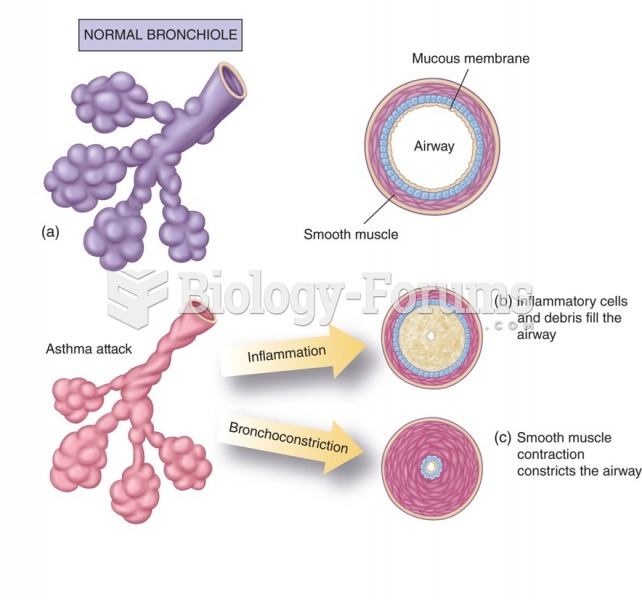This topic contains a solution. Click here to go to the answer
|
|
|
Did you know?
Blastomycosis is often misdiagnosed, resulting in tragic outcomes. It is caused by a fungus living in moist soil, in wooded areas of the United States and Canada. If inhaled, the fungus can cause mild breathing problems that may worsen and cause serious illness and even death.
Did you know?
The longest a person has survived after a heart transplant is 24 years.
Did you know?
There are more nerve cells in one human brain than there are stars in the Milky Way.
Did you know?
More than 34,000 trademarked medication names and more than 10,000 generic medication names are in use in the United States.
Did you know?
Patients who cannot swallow may receive nutrition via a parenteral route—usually, a catheter is inserted through the chest into a large vein going into the heart.
 Enhanced photomicrograph showing a macrophage (purple) attack- ing bacillus Escherichia coli (green)
Enhanced photomicrograph showing a macrophage (purple) attack- ing bacillus Escherichia coli (green)
 The strange situation. The Strange Situation features a series of episodes in which (a) the mother l
The strange situation. The Strange Situation features a series of episodes in which (a) the mother l





